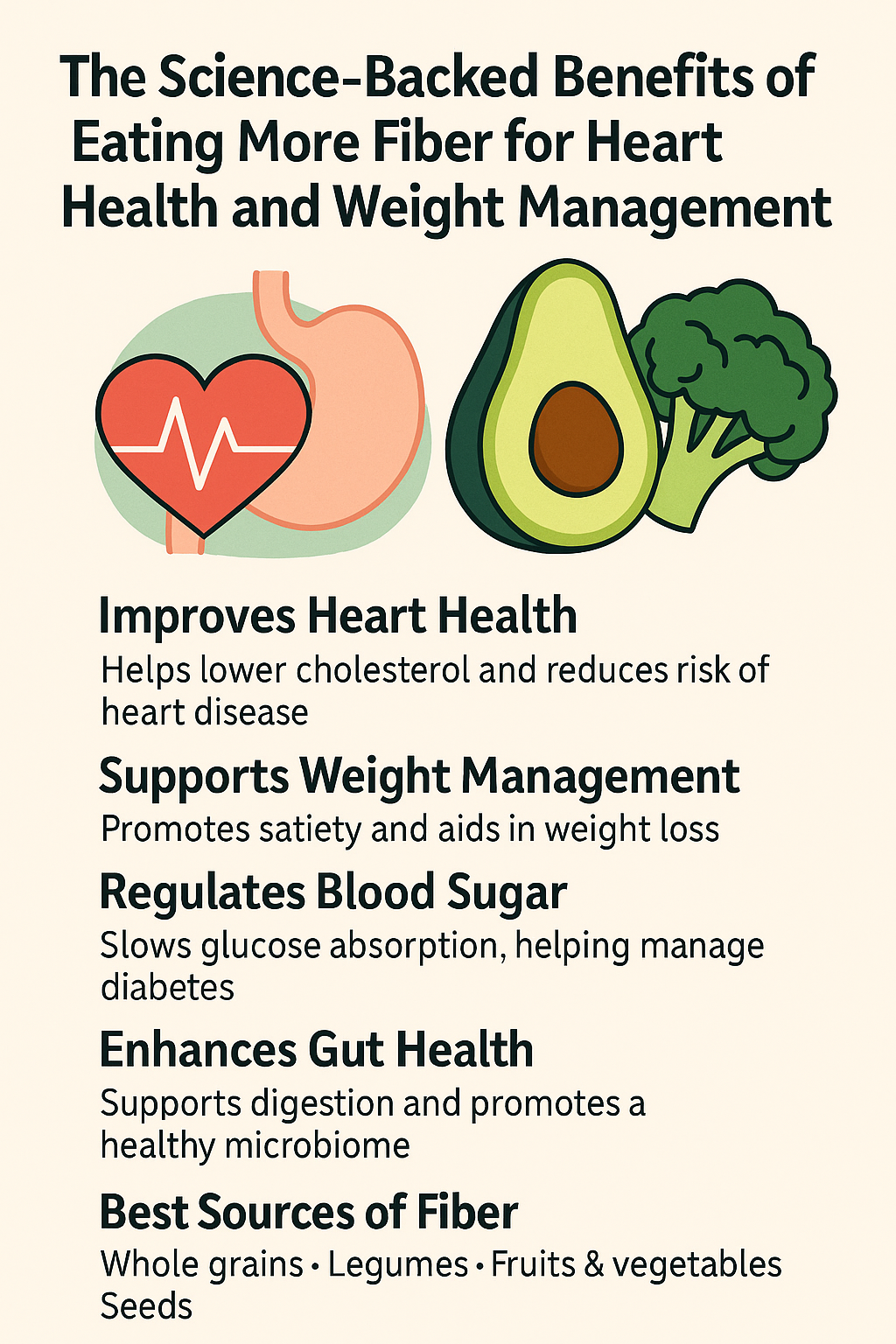The Science-Backed Benefits of Eating More Fiber for Heart Health and Weight Management

Introduction
When it comes to improving overall health, dietary fiber is one of the most overlooked yet powerful nutrients. Found in fruits, vegetables, whole grains, and legumes, fiber is more than just “roughage.” Research shows that a fiber-rich diet can lower cholesterol, regulate blood sugar, support weight loss, and reduce the risk of chronic diseases. In this article, we’ll break down the science of dietary fiber, why it matters for heart health and weight management, and how you can easily add more fiber into your daily meals.
What Is Dietary Fiber?
Dietary fiber is a type of carbohydrate that your body cannot fully digest. Instead of being absorbed, it passes through the digestive system, providing key benefits.
- Soluble fiber: Dissolves in water and helps lower blood sugar and cholesterol.
- Insoluble fiber: Adds bulk to stool and helps with digestion.
Both forms of fiber are essential for overall wellness.
Key Benefits of a High-Fiber Diet
1. Improves Heart Health
Studies show that consuming at least 25–30 grams of fiber per day helps reduce LDL (“bad”) cholesterol, lowering the risk of heart disease. Soluble fiber, found in oats, beans, and apples, forms a gel-like substance that binds cholesterol in the gut and prevents absorption.
2. Supports Weight Management
High-fiber foods promote satiety, meaning you feel full for longer. This naturally reduces calorie intake and can help prevent overeating. Research from the American Journal of Clinical Nutrition found that people who consume higher amounts of fiber tend to maintain healthier body weights.
3. Regulates Blood Sugar
For those with type 2 diabetes or prediabetes, fiber plays a critical role in slowing glucose absorption. Foods like lentils, barley, and chia seeds help stabilize blood sugar levels and improve insulin sensitivity.
4. Enhances Gut Health
Insoluble fiber acts like a natural “scrub brush” for the intestines, while soluble fiber feeds the good bacteria in your gut microbiome. This balance supports digestion, reduces constipation, and lowers the risk of colon cancer.
Best Sources of Fiber
- Whole grains: oats, brown rice, quinoa
- Legumes: beans, lentils, chickpeas
- Fruits: apples, berries, pears
- Vegetables: broccoli, carrots, leafy greens
- Seeds: chia, flaxseeds, sunflower seeds
Aim for a variety of these foods daily to ensure both soluble and insoluble fiber intake.
Tips for Increasing Fiber Intake
- Start your day with oatmeal topped with berries.
- Swap white rice for quinoa or brown rice.
- Snack on apple slices with nut butter.
- Add lentils or beans to soups and salads.
- Gradually increase fiber to avoid bloating, and drink plenty of water.
Conclusion
Adding more fiber to your diet is a simple yet powerful step toward better health. From lowering cholesterol to supporting weight loss and balancing blood sugar, the benefits are well-documented. By making small daily swaps—like choosing whole grains over refined carbs or adding more vegetables—you can reach the recommended intake and protect your long-term health.



